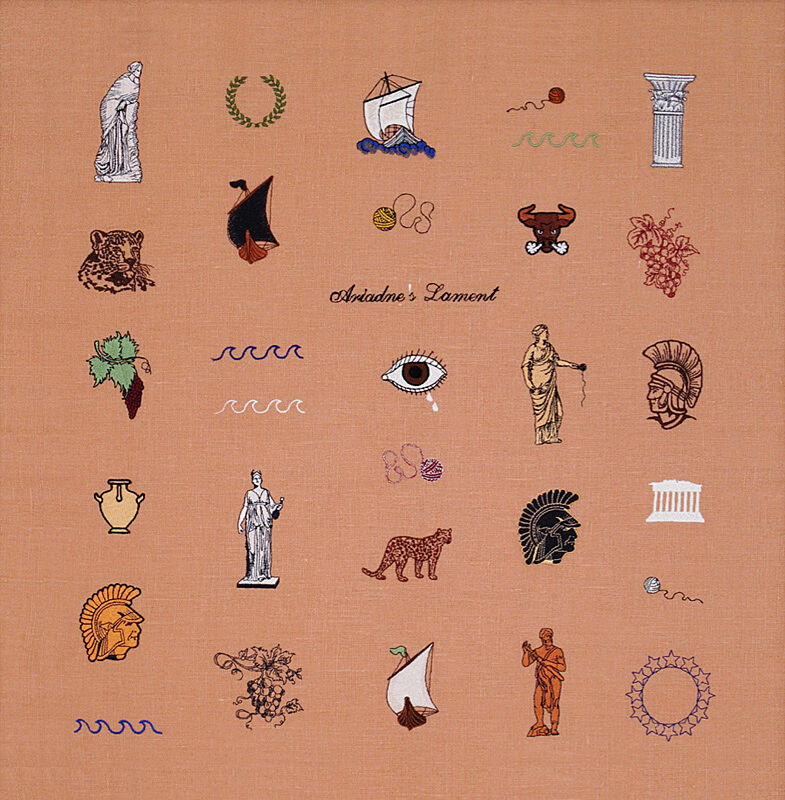Elaine Reichek
Born in 1943 in New York
Lives and Works in New York
These embroideries and tapestry by Elaine Reichek address the ancient greek myth of Ariadne, who fell in love with the young warrior Theseus and gave him crucial aid in his fight against the Minotaur. After slaying the half man, half bull, Theseus found his way out of the monster’s lair, the treacherous labyrinth of crete, by following a thread given to him by Ariadne. The two ran off together, but as Ariadne was sleeping Theseus abandoned her and sailed away. While Ariadne was lamenting her fate, the god Dionysus came to woo and wed her. He made her immortal and tossed her crown into the heavens, where it is seen today as the constellation Corona Borealis.
The myth has often been represented and retold in art and literature over the millennia. in her ongoing series Ariadne’s Thread (2008– ), Reichek re-creates some of these famous images and texts—not in paint or print but in thread, the very material that ariadne used to help Theseus.
Reichek hand-stitches most of her embroideries; others she makes with a digital sewing machine, combining standard designs included with the machine and custom-programmed imagery. The tapestry on view, Paint Me a Cavernous Waste Shore, was woven on a computerized loom, to the artist’s specifications, in a commercial mill. By mixing the handmade and the digital, she illuminates parallels between the ways in which stitches and pixels construct images. Reichek’s works build on the place of textiles at the foundation of modern computing, continuing a history that goes back to Charles Babbage and Ada Lovelace’s nineteenth-century plan for an “analytical engine,” a predecessor of the computer that drew its principles from the Jacquard loom of 1801.

